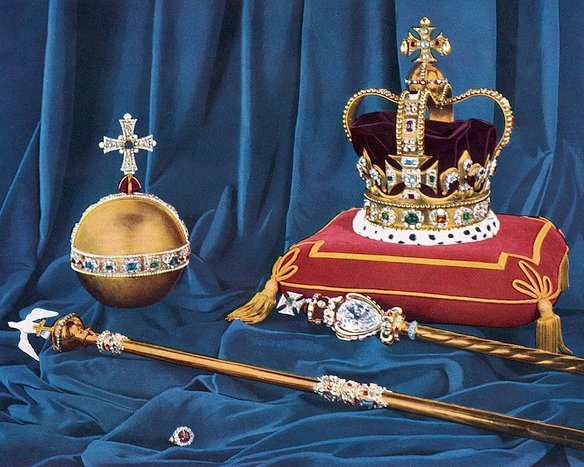
The Sovereign’s Orb and The Sovereign’s Sceptre are two of the most famous pieces of the Crown Jewels of the United Kingdom. Housed within Jewel House in the Tower of London, the Crown Jewels include over 100 objects and 23,000 gemstones. The Crown Jewels are part of the Royal Collection and are held in trust for the nation by the Monarch. The Orb and Sceptre were placed on Elizabeth II’s coffin at Her Late Majesty’s State Funeral, alongside the Imperial Crown.
The Orb and Sceptre form part of the official English Coronation Regalia and have played a role in coronations for centuries. The Orb and Sceptre will play a crucial role during the Coronation of King Charles III on May 6, 2023.
The Sovereign’s Orb, representing the monarch’s power and God’s granting of that power to the monarch, is a round hollow sphere of gold adorned with a cross. Included within the design are over 600 precious stones and pearls, including diamonds, rubies, emeralds, amethysts, and sapphires.
The Orb was designed by the royal goldsmith, Sir Robert Viner, for the Coronation of King Charles II. In 1671, Colonel Thomas Blood attempted to steal the Sovereign’s Orb along with the other Crown Jewels. The Orb was recovered but was damaged during Blood’s escape; it was subsequently repaired.
During the Coronation, the Archbishop of Canterbury places the Orb in the monarch’s right hand, then the Orb is placed on the altar before the monarch is crowned.
The Sovereign’s Sceptre, representing the Sovereign’s authority over worldly affairs, was also designed by Viner for Charles II and has undergone many alterations since.
The Sceptre consists of a long gold rod and is adorned with diamonds, emeralds, rubies, sapphires, and amethysts. Towards the top of the Sceptre, also known as The Sovereign’s Sceptre with Cross, is an enamelled structure containing the Star of Africa. The Star of Africa, which sometimes goes by the name Cullinan I, is one of the world’s most famous diamonds. It was added to the Sceptre in 1910.
The diamond was officially presented by South Africa to King Edward VII at Sandringham House in 1907 and remains the largest colourless cut diamond in the world.

